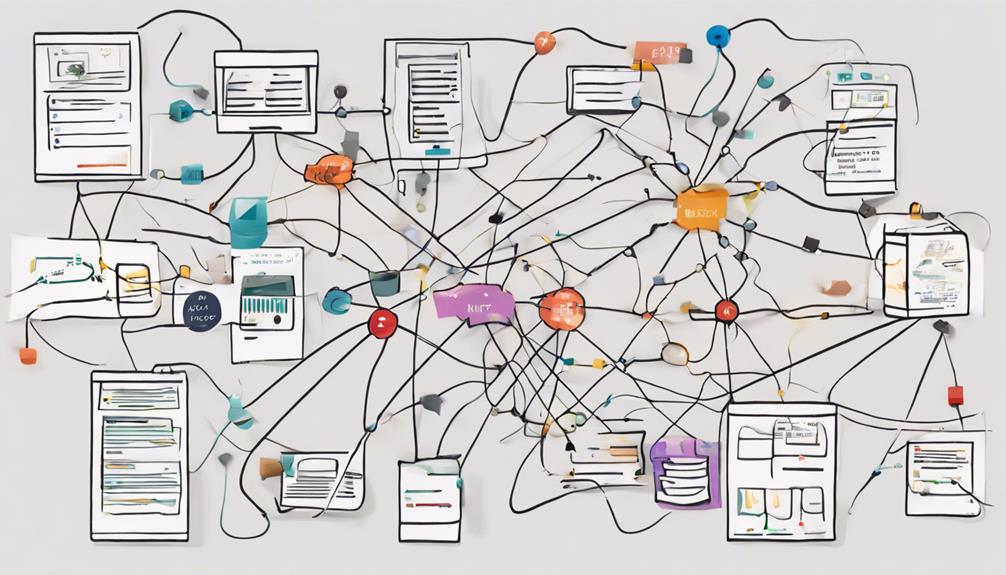You might think enhancing B2B data quality is a daunting task, but with the right strategies, it can become a manageable and rewarding endeavor. By implementing systematic data profiling, setting clear quality goals, and developing a solid data governance plan, you lay the foundation for success. However, the key to truly elevating your data quality lies in the practical application of data cleaning techniques and the utilization of advanced data quality tools. These elements, when combined effectively, can revolutionize the way your organization handles B2B data, leading to improved decision-making and operational efficiency.
Assessing Current Data Quality
When evaluating the effectiveness of your B2B data quality, it is crucial to begin by conducting a comprehensive assessment of your current data landscape. This assessment involves two key components: data profiling and data validation. Data profiling allows you to gain insights into the quality of your data by examining its structure, completeness, and consistency. By analyzing patterns and identifying anomalies, you can uncover potential issues that may be affecting the overall quality of your data.
Following data profiling, the next step is data validation. This process involves verifying the accuracy and reliability of your data through various checks and tests. By comparing data against predefined rules and standards, you can ensure that it is consistent, up-to-date, and meets the required quality criteria. Data validation helps to identify errors, duplicates, and inconsistencies that could impact the integrity of your data and the decisions made based on it.
Setting Data Quality Goals
To ensure the continuous improvement of your B2B data quality, the next strategic phase involves establishing clear and measurable data quality goals. Setting specific goals is crucial for enhancing processes and measuring success in your data quality initiatives. Begin by identifying key areas where data quality improvements are needed, such as data accuracy, completeness, consistency, and timeliness. Consider the impact of poor data quality on your business operations and set goals that address these issues directly.
When setting data quality goals, make sure they are SMART: specific, measurable, achievable, relevant, and time-bound. For example, a goal could be to increase data accuracy by 15% within the next quarter by implementing data validation processes. By having well-defined goals, you can track progress effectively and make adjustments as needed to stay on course. Regularly monitoring and analyzing data quality metrics against your goals will help you identify areas for improvement and ensure that your data quality efforts are making a meaningful impact on your business.
Developing a Data Quality Plan
Developing a Data Quality Plan is a critical step in ensuring the effectiveness and sustainability of your B2B data quality initiatives. To begin, conduct thorough data profiling to understand the current state of your data. This involves analyzing the quality, structure, and consistency of your data sets. Data profiling helps identify any anomalies or issues that need to be addressed.
Furthermore, establishing strong data governance practices is essential for maintaining high-quality data. Implementing data governance policies and procedures ensures that data is accurate, secure, and compliant with regulations. It involves defining roles, responsibilities, and processes for managing data effectively within your organization.
Implementing Data Cleaning Techniques
As you delve into the realm of enhancing B2B data quality, the next crucial phase involves the implementation of data cleaning techniques. Automated validation plays a key role in this process, allowing you to efficiently identify and rectify inaccuracies within your database. By setting up automated validation protocols, you can ensure that the data entering your system meets predefined standards, reducing the occurrence of errors.
Regular audits are also essential in maintaining data quality. Conducting periodic reviews of your database helps in detecting any inconsistencies or outdated information that may have crept in over time. These audits enable you to clean up duplicate entries, correct formatting issues, and remove irrelevant data, thus keeping your database up to date and accurate.
Using Data Quality Tools
Exploring various data quality tools can significantly enhance your ability to maintain high standards of accuracy and consistency within your B2B database. Data validation tools are crucial for ensuring that the information in your database is accurate and reliable. These tools help in detecting errors, inconsistencies, and duplications within your data, allowing you to rectify issues promptly. By utilizing data profiling tools, you can gain valuable insights into the quality of your data. These tools analyze the structure, content, and relationships within your database, highlighting areas that may require attention. Data profiling enables you to understand the completeness, uniqueness, and consistency of your data, ultimately leading to improved data quality. When selecting data quality tools, consider factors such as scalability, ease of integration, and the specific needs of your business. By incorporating these tools into your data management processes, you can proactively enhance the overall quality of your B2B database.
Frequently Asked Questions
How Can I Ensure Data Quality Maintenance Over Time?
To ensure data quality maintenance over time, you must prioritize continuous monitoring and automated validation. By implementing these strategies, you can proactively identify and rectify any inconsistencies or errors in your B2B data, ensuring its accuracy and reliability.
What Are the Best Practices for Data Quality Governance?
To ensure top-notch data quality governance, start with robust data quality monitoring. Implement regular audits and reviews to catch discrepancies early. Also, invest in thorough data quality training for your team to enhance overall data accuracy and reliability.
Is There a Way to Measure the ROI of Data Quality Efforts?
To measure the ROI of data quality efforts, track cost reductions, revenue increases, and operational efficiencies. Establish key performance indicators tied to data quality. Regularly assess the impact on business outcomes. Prioritize data quality for long-term maintenance and continuous improvement.
How Do I Address Data Quality Issues Caused by Human Error?
To address data quality issues caused by human error, utilize training programs for error prevention and automation tools for data validation. Implementing these strategies will enhance accuracy and efficiency, minimizing the impact of human errors on data quality.
What Strategies Can Help Prevent Data Quality Degradation in the Future?
To prevent data quality degradation, you must implement proactive monitoring to catch issues early. Continuously improve data processes, establish clear quality standards, educate staff on best practices, and regularly audit data sources. These strategies ensure ongoing data accuracy and integrity.



